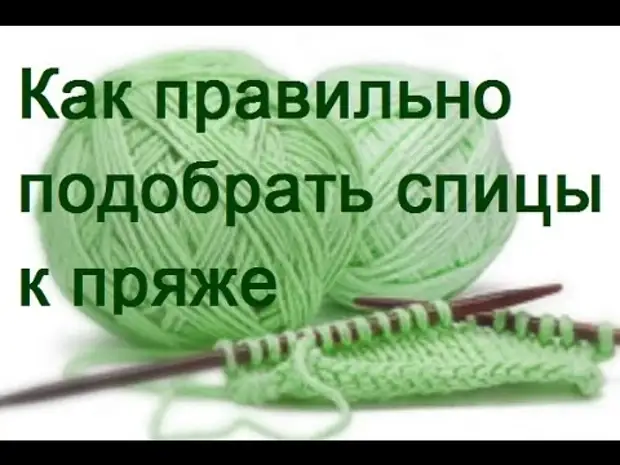
Rule 1: The thickness of the spoke must be slightly larger than the thickness of the thread
Experienced needlewomen choose the needles "on the eye". Make it very easy.
Put the yarn thread in the non-strained state next to the selected knitting needles. The thickness of the spokes should be about 1 mm more than the thickness of the yarn chosen. For thick yarn (with a thread thick, more than 4 mm), the spokes can be taken by 1.5-2 mm thicker than yarn, so that the product is not rude. This rule works for the usual "non-fantasy" yarn without a pile and decorative elements.
Rule 2: for fantasy, stripped yarn (mohair, angora) - their laws
If you have chosen a fantasy yarn - with different thread thickness, with decorative elements, with volumetric inserts on a thin thread, with beads and sequins - first look at the label. The Russian industry has not yet mastered the production of such yarn, and foreign manufacturers definitely indicate the recommended spoke size and hook on the fantasy yarn. But if you still doubt, follow next rules:
- For mohair, Angora and other fluff yarn choose the knitting needles for 2-3 mm thicker than thread (excluding pile). Then the product flies well, it turns out to be light, air, very warm and not rolled with washing and sock.
- For fantasy yarn, choose the knitting needles according to rule 1 in the calculation of the thick section of the thread. If decorative elements are small and they are located through large intervals, then focus on that thickness of the thread that prevails in your scene.
- For synthetic yarn with a long pile of type "Herbers" Take the knitting needles No. 5-6, not mistaken.
- For stretch yarn, choose the knitting needles according to rule 1, but do not pull the thread during the knitting process, let it freely. Lycra contained in the thread will not allow the product to be loose. If you can knit too tightly, the Stretch effect will disappear in the finished product.
Rule 3: Knit sample
A good seller will always offer you to connect a sample, so that you are convinced of the correctness of the choice of yarn and spice. It is enough to connect a sample of 8-10 loops and 5-6 rows to see the result. Knify the sample yourself, since the density of knitting is all different.
Rule 4: The thickness of the spokes depends on the drawing
If you have chosen a pattern with braids, or crossed loops, take the knitting needles on the floor size more recommended in Rule 1 so that the mating is freer. If the drawing is openwork - with a large number of nakidov, with elongated or disassened loops - take the knitting needles to the size of less.
Rule 5: We bind the product with thinner knitting needles.
For rubber bands at the bottom of the product and on the sleeves, the necks of the neck and the shelves choose the spokes size less than for knitting the product. This will allow the edges of the product not to stretch when washing and sock.
Rule 6: Observe the density of knitting
Beginner knitters, as a rule, knit very tightly, therefore it is recommended to take spokes to the floor of the size or size more recommended in rule 1. But it is better to learn to follow the density of knitting. If you knit too tightly, you are in constant voltage, quickly tired, and do not get pleasure from work. This affects and ultimately - the product is rude, and the yarn does not reveal all his wonderful qualities. If you knit too weak - it's even worse. Changing the size of the spokes will not help correct this error, and the loose product will be deformed during the socks.
With the correct density of knitting loops wrapped the needle without sagging, while the thread in the loop remains not stretched. Rinse the spice cloth. If the loops are easily moved, but the needker does not slip, then you do everything right.
There is nothing better than your own experience! Experiment, and you will succeed!
A source
